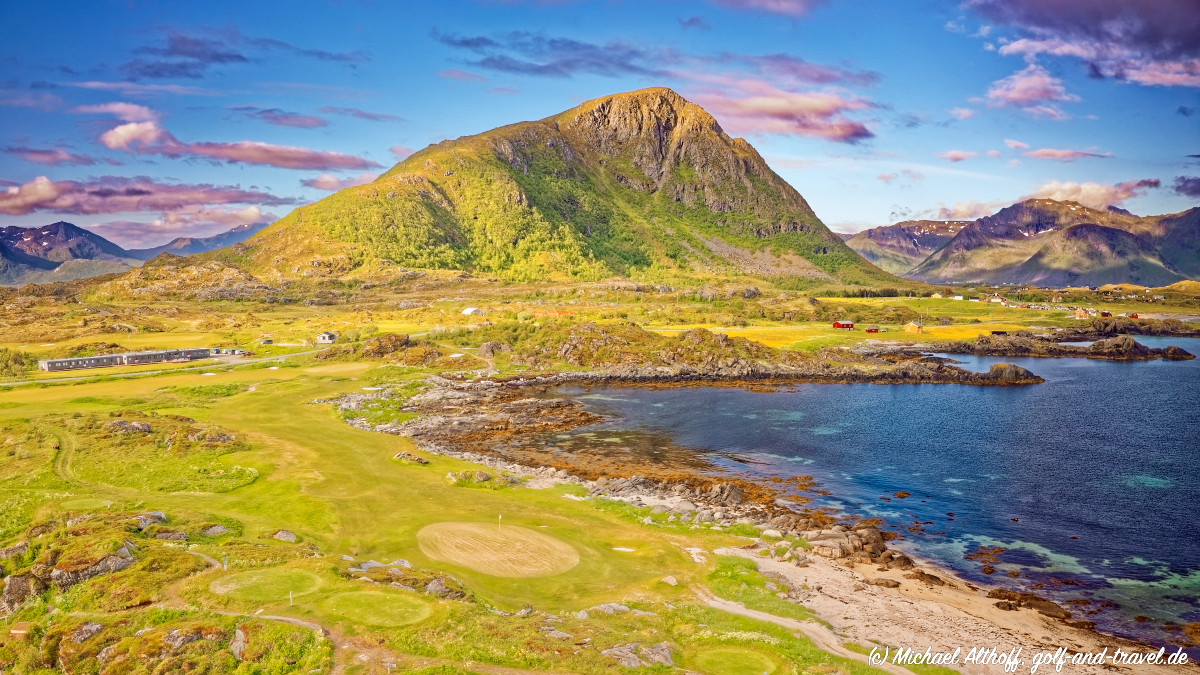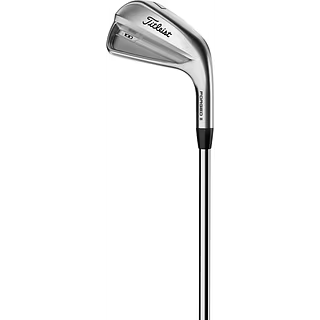


Lofoten Links - Golf between midsummer night and the northern lights
Experience Lofoten Links on a golf trip! Spectacular links golf north of the Arctic Circle, where nature & northern lights impress.
Many people know the Lofoten Islands primarily as a destination for nature lovers. But since 1998, the northernmost top 100 golf course, which now belongs to the Canadian Cabot Group, has also been attracting golfers to the region north of the Arctic Circle. The "Lofoten Links" course became world-famous thanks to a photo by the Swede Jacob Sjöman, who captured the signature hole on hole 2 at the very moment when auroras were unfolding their fascinating play behind it. Interesting for German golfers: since 2024, Lufthansa subsidiary Discover has been connecting Frankfurt directly with Harstad/Narvik Airport (Evenes), from where it is a good three hours by car to Lofoten Links. Those staying overnight should make use of the very tastefully furnished lodges at Lofoten Links.
Unique experiences on Lofoten Links
The course runs directly by the sea for long stretches - pure links golf. How easy or difficult the holes are to play depends not least on the wind. Right at the start, a dogleg left awaits, which runs almost entirely along the water. Hole 2 leads directly to the signature hole, a magnificent Par 3 with a green perched on a small rocky island - including a central Bunker in front of the green. If you golf here at midsummer's night, the course faces straight north, so you hit directly towards the sun at midnight - an extraordinary experience.

The first six holes of the course were put into operation in 1998, only later was the Par 71 course expanded to 18 holes. On the round, you can tell that founder and CEO Frode Hov likes designs in the style of the time-honored British links courses (like the birthplace of The Open in Prestwick). That's why there are numerous doglegs and blind shots on the round. If you want to take a shortcut at the doglegs, you often have to take the path over water. In general: you should take enough balls with you, especially when it's windy - and play at least two rounds, because on the first round, the numerous views of the rugged, impressive landscape of the Lofoten Islands keep distracting you from playing golf.
Lofoten Links: Spectacular golf in a class of its own
While the front nine is largely flat with only slight differences in elevation, the second part of the round begins with a significantly uphill Par 4. And as befits a links course, there is also a stream on the right-hand side, known as a burn in Scotland. Many holes on the back nine have an undulating Fairway, and dense Rough also comes into play. The 12th hole takes you back to the sea, and the 14th is a wonderful double dogleg par-4 between rocks. The sixteenth hole, the longest par-4 of the round with a narrow fairway between the water, is also a tester for golfers of all abilities. The last par-3 on hole 17 requires a high teeshot over water, while the wind and large green with many flag positions provide additional excitement. On the final hole, the road to the left of the fairway comes dangerously close to the landing zone of the teeshot, so many golfers prefer to go for Wood 3. The heavily undulating Fairway and a green directly in front of the rocks familiar from hole 1 make for a visually beautiful and challenging end to the round.
Lofoten Links not only offers spectacular golf in a class of its own, but can also be perfectly combined with an exploration tour of this archipelago in northern Norway. The course, which is closed in winter, is very playable. The most attractive times are around midsummer night and early fall, when you have the chance to see the northern lights.




Release date
11 Jun 2025
photos
Cover picture: The breathtaking Lofoten Links and its spectacular surroundings. (Photo: Michael Althoff)
Impressions of Lofoten Links, one of the best golf courses in the world. (Photos: Michael Althoff)
Mountains, rocks and sea characterize the landscape around the Lofoten Links. (Photo: Michael Althoff)







